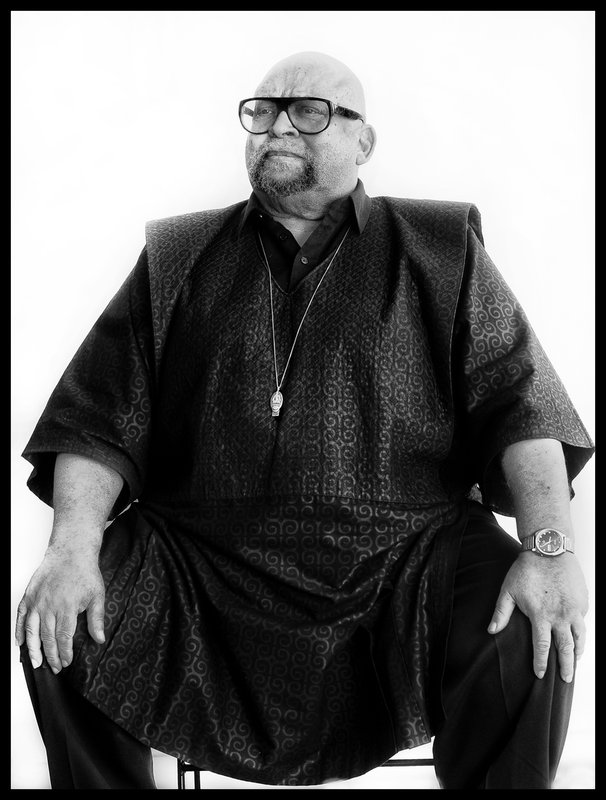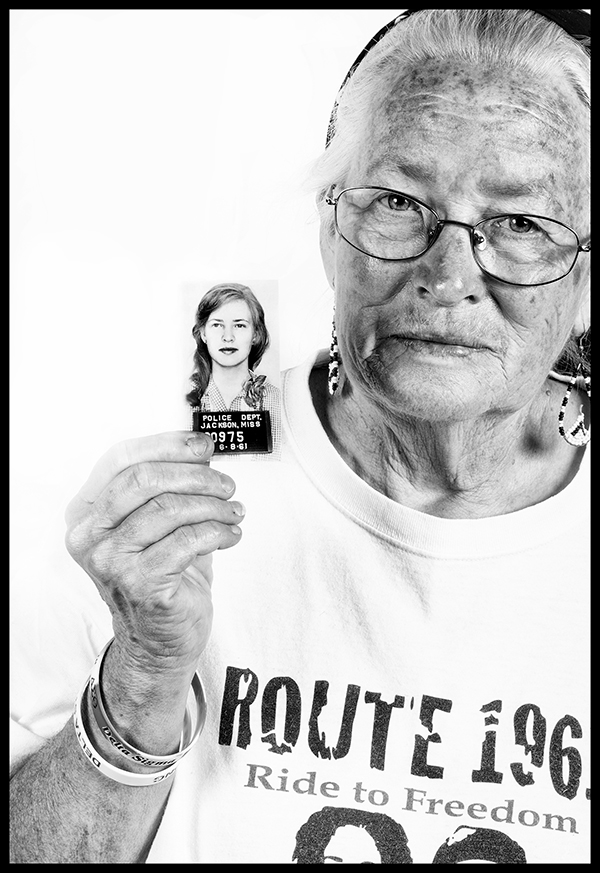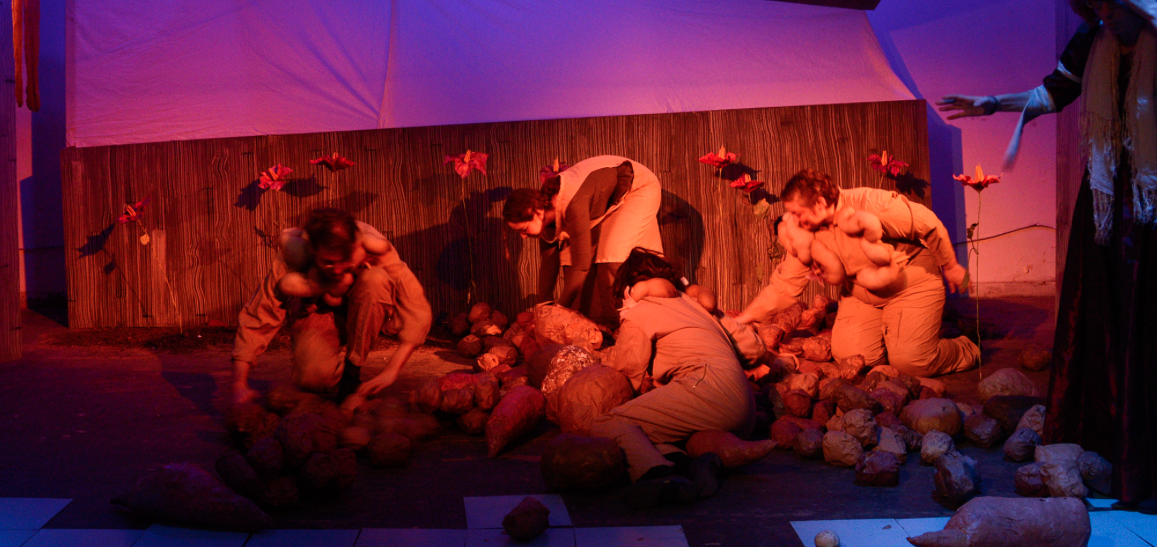Juliana Biondo reviews Joseph M. Giordano ‘Struggle: Portraits of Civil Rights and Black Power’ at the Reginald F. Lewis Museum
He sits squarely in front of you. Your eyes meet. His throne is a tessellation of fleur- de-lis, elegantly shimmering. His tie mimics this tessellation design, which in turn mimics his pocket-handkerchief. His eyebrows are heavy and slouch downwards. His cheeks are full and pop up from his slight smile. He is elderly and dignified; he seems content. You notice a void; his throne sits in nothing but whiteness. His suit carves out a central, dominating dark shape. Then, many shades of gray begin to reveal small moments, which build this man into a curious, intriguing figure. You are looking at Reverend Joseph Lowery, Martin Luther King’s right hand man in the fight for civil rights.
In 1964 the Civil Rights Act passed, outlawing any kind of discrimination based on race, color, religion, sex, or nationality. In 1965, the Voting Rights Act passed, prohibiting discrimination in voting. In celebration of the fiftieth anniversaries of both of these landmark events, the Reginald F. Lewis Museum of Maryland African American History and Culture partnered with Maryland-based photographer Joseph M. Giordano to host an exhibition of the artist’s black and white portraits of Civil Rights leaders and activists. Struggle: Portraits of Civil Rights and Black Power aims to reveal a new visual history.
Giordano adeptly captures paradox in his portraits: his focus on a single individual often leads the viewer to feel something bigger than any one person, a spirit of humanity. The photographer, a photojournalist for the Baltimore City Paper, expertly blends void environments with information rich subjects to pull the viewer into a moment of real learning. In reflecting on his subjects Giordano notes, “They all benefit by being isolated from their environments. I pulled them out of the crowd.” In this isolation we have the opportunity to explore the depth of their character. But, is it the true depth of their character?
“I wanted there to be the element of life, not so much of artisanship. I didn’t want to have anything to do with the portraits, I didn’t want to put my stamp on it.” Giordano allowed his subjects to pose themselves. Julian Bond squared himself with the camera and took an upright posture. Dr. Karenga created an air of a Japanese warlord and filled his space with confrontational power, thick glasses and winged shoulders.

Yet, while they may be able to dictate their own posture, they cannot claim their own place in history. History often endows individuals with the status of a hero, especially those who alter something as large as the social landscape of the United States of America. However, a hero is just as much of an individual person as he or she is a persona, a fabrication of public reputation, often to universal proportions. The way a hero, or historical figure, is represented by an artist can become what history accepts as their character. History is a noble robe to wear, but a heavy one nonetheless. Is it possible for a hero to be appreciated not as flags to be flown over the triumph of their cause, but instead as true individuals with unique preferences, odd habits, or a complicated family life? Can a photograph ever capture the man or woman behind the heroic identity?
Giordano’s portraits in this exhibit relate visually to the work of Richard Avedon, whose photographs of celebrities, socialites, and social movement leaders also use a white void background space and black bounded frames, along with a purposeful eye within intimate spaces that transforms the subject. In one famous Avedon shot of Audrey Hepburn, he transforms her from a known public commodity into an otherworldly creature, giving the viewer a sense of alienation by emphasizing her eyes to a disproportionate size. While the eyes maintained the relatable beauty that we all know from the movies, their relationship to the other facial and compositional elements of the photograph elevated them to be extremely provocative. With a simple tilt something once comfortable and known becomes foreign and challenging. In many ways Avedon was able to free his subjects into their individuality, away from the weighty robes of history and public notoriety, by clinging to his desire for pure aesthetic prowess.

The level of aesthetic freedom in Struggle: Portraits of Civil Rights and Black Power is gauged when we meet the eyes of Freedom Rider Joan Trumpauer Mulholland. Curator Asantawa Boakyewa reflects that for Joan “…black power wasn’t something off-putting… It was about self-reclamation, and reflecting different voices and opinions was important.” In this photograph, hung on the walls of an African-American cultural museum, Joan becomes a representative for more than just herself. Her face becomes an icon for a new mentality, the spirit of a social movement.
What aesthetic revolution might it take to free her from this icon status, the framework imposed by her own history? It is entirely possible that the person behind the hero persona will always be secret to those of us looking at it in the future. But then again, it is only through these iconic gestures that society can grow. Seeing history represented by heroes and personas, we can convince ourselves we understand something as vague, unobtainable, and behemoth as the past.
This exhibition will be up through January 25, 2015 and the museum will host a gallery walk with the artist on November 1. Click here for details.
Author Juliana Biondo is a writer, artist, and art historian of modern art. Follow her other thoughts at: http://allaroundart.







